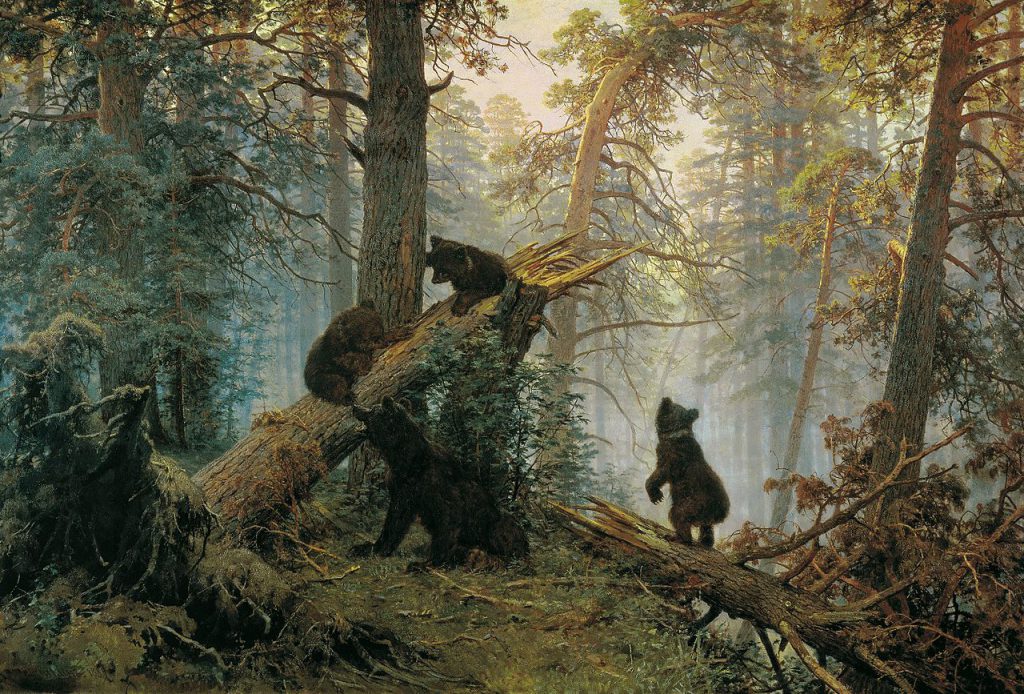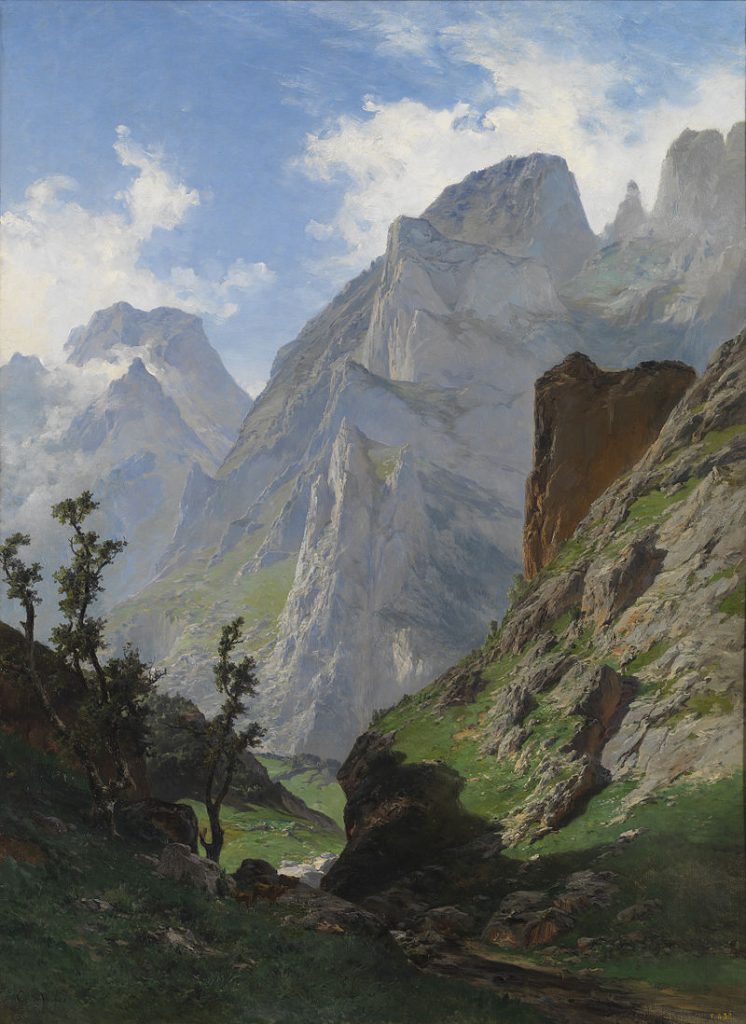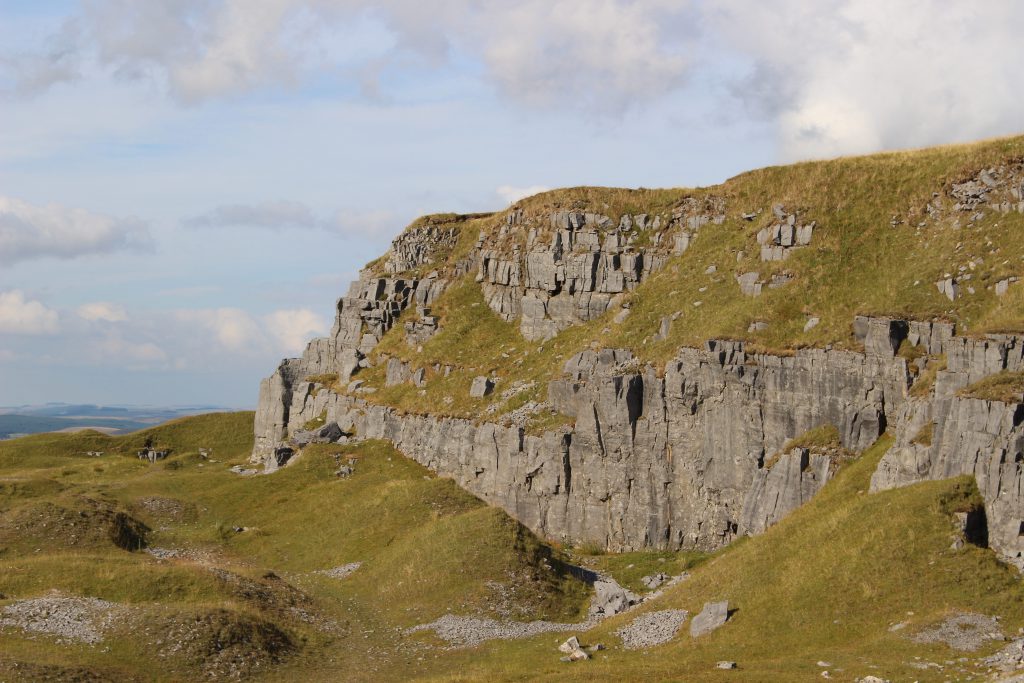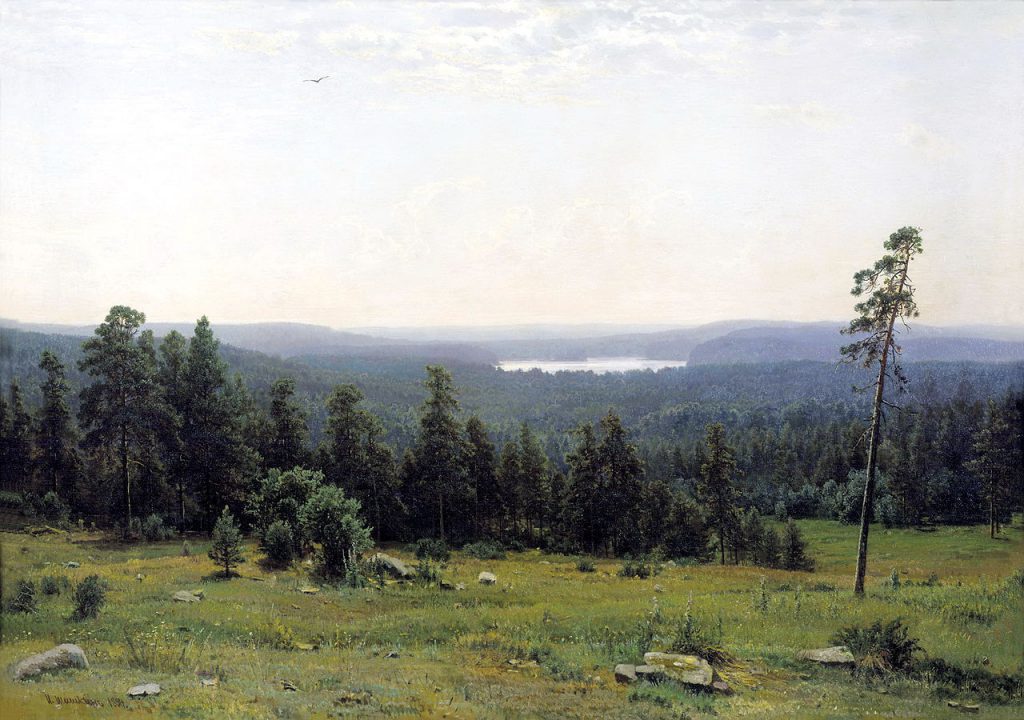
(Continuing from The Natural Aesthetic – Nature crafts its own art)
Landscape aesthetics
This brilliant painting by Ivan Shishkin (25 January 1832 – 20 March 1898), called ‘morning in a pine forest’, depicts bears in their pine tree forest habitat:

See how the colour is in harmony with the features of that forest. That bear standing on the felled tree looking out into a corridor of trees yawning in depth. That use of lighting; the sunlight reflecting off the top of the trees contrasting with the shadowy undergrowth of the forest floor.
We can take a good look at this painting and find ourselves feeling uplifted, feeling serenity, experiencing novelty, or being inspired by this to start painting art. Whatever the conclusions drawn from our varied interpretations, from our sensory contact the painting influences the mind.
Whenever I refer to landscape aesthetics I include both landscape paintings which depict natural scenery and the real, sensuous scenery that we experience during country walks or hiking trips.
Don’t get me wrong, I especially enjoy landscape paintings because they represent the ideal good qualities which I admire from natural scenery, and these ideal good qualities can also be exaggerated by the artist because he is free to create within the framework of his canvas.
The place where a thing is, is what surrounds the thing. So if you’re in some place, the features of your surroundings give information about the place you’re in by sensory impressions. If you see trees, brooks, scintillating rays of sunshine and much of the colour green, hear running water, gentle rustling of leaves and, of course, the birds chirping and squawking. That is confirmation that you’re in woodland.
A picture is not the reality, but only a frozen representation crafted from the idiosyncrasies of the artist’s mind. The product of his mind is not original, not self-authored by him from the void; but an imitation inspired by the his mind’s contact with natural phenomenon.
The actual experience, the sensuous reality, of hiking up a hill, walking through that woodland undergrowth or strolling along through a vast featureless beach is an experience of another kind. The kind where you are witnessing the changing reality before you and are able to interact with it, which a static picture denies but at least there are no chances of danger from static paintings!


Aesthetics and peace of mind
Why is it that so many people walking through forests or jungles stop, look and marvel at the plants and geological features; when those sorts of environments were (and perhaps still are) often locations populated by dangerous wildlife that harmed or killed hunter gatherer humans?
The implication? Appreciating the art of nature is conditional, why? because the mind must first feel safe, calm and be mindful as a required condition for drawing in the natural splendour. Imagine you were in a pine forest with bears like in that ‘morning in a pine forest’ painting will there still be aesthetic appreciation when there are real bears only three meters away from you?
Think about this scenario, if you were being chased by a bear, you could be running through a place that would put the Elysian Fields to shame, but you must forego that luxury because you’re too busy ensuring your survival to care about taking a snapshot or selfie. Fight or Flight; survival before pleasure.
Let’s move on from danger and onto the question of peace of mind. But first by peace of mind, I mean a mind free from mental perturbations like worry, anxiety, stress, frustration and depression. So the question: is peace of mind a necessary requirement to enjoy nature and its scenery?
Think of this scenario, you’re part of a group planning a hiking trip through a breathtaking natural park and you’re really excited about it. However, because of the vicissitudes of life you receive bad news that disturbs your peace of mind. The trip is still on and you arrive at the destination, but will you enjoy it as much with a mind compromised? If your mind is compromised by mental perturbations will you pay attention to that cluster of trees surrounding the lake? will that close-up view of a flower be as satisfying?
Wherever the body goes, the mind follows.

Alternatively, can nature, its varied beauty and the paintings of it thereof help heal someone’s disturbed peace of mind? What are your thoughts?

